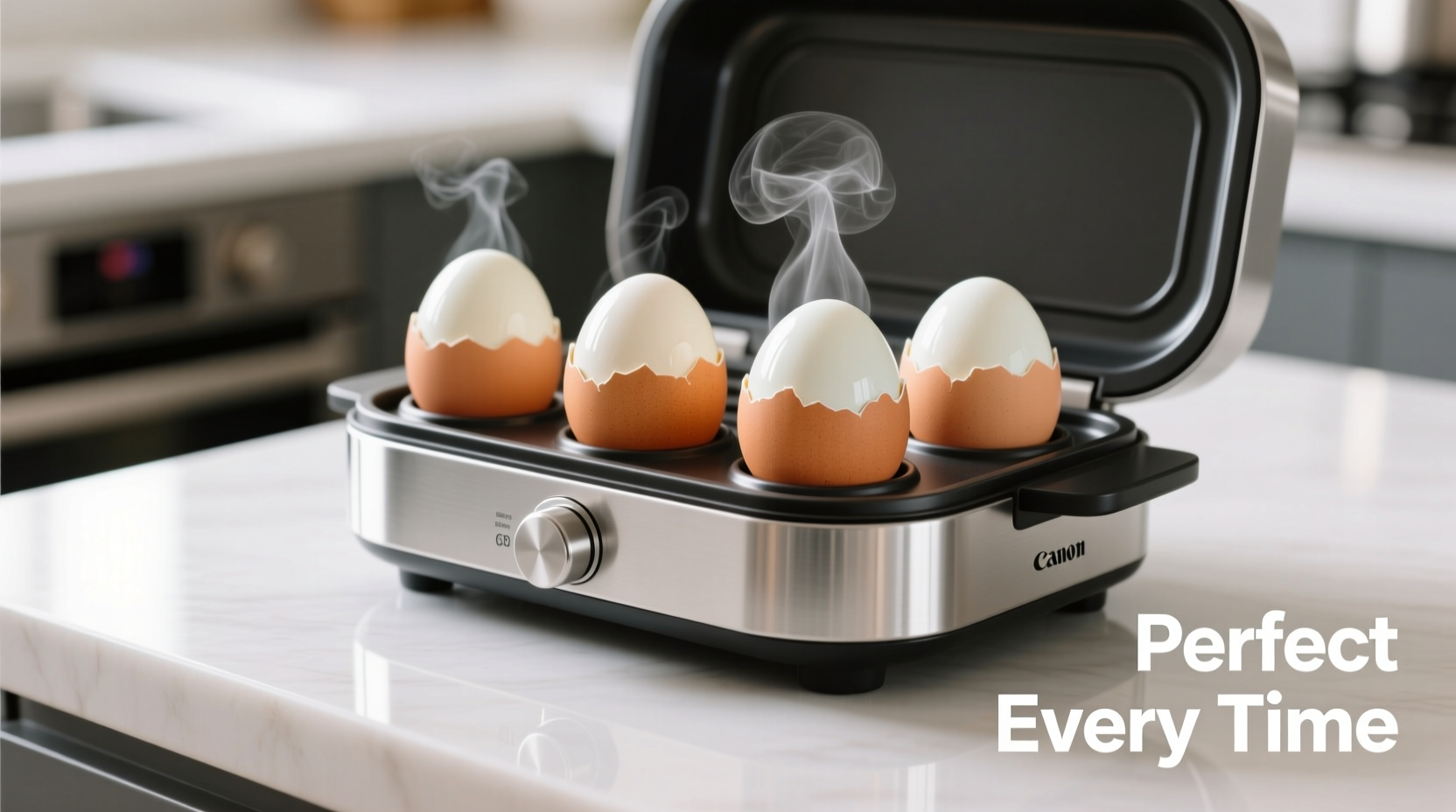Unlock Perfect Eggs with Your Egg Cooker: A Complete Guide
Whether you're meal prepping for the week or need a quick protein boost, an egg cooker transforms the simple task of boiling eggs into a foolproof process. Forget guessing game with stovetop methods - egg cookers deliver consistent results with minimal effort. This guide walks you through every step to master your appliance and achieve restaurant-quality eggs at home.
Understanding Your Egg Cooker Components
Before using your egg cooker, familiarize yourself with its essential parts. Most models include a heating base, water reservoir, egg tray, lid with vent, and sometimes additional accessories like poaching cups or omelet trays. The water reservoir determines cooking time - more water creates steam for longer cooking. The egg tray holds eggs in place during cooking, while the lid traps steam for even cooking. Understanding these components helps you troubleshoot issues and customize results.
| Egg Style | Water Level Mark | Cooking Time | Yolk Texture |
|---|---|---|---|
| Soft-Boiled | "Soft" mark or 6mL | 6-8 minutes | Runny center |
| Medium-Boiled | "Medium" mark or 8mL | 9-11 minutes | Creamy center |
| Hard-Boiled | "Hard" mark or 10mL | 12-14 minutes | Firm throughout |
Step-by-Step Egg Cooking Process
Preparation Essentials
Start with room-temperature eggs for best results - cold eggs from the refrigerator may crack during cooking. Gently pierce the wider end of each egg with a pin to prevent cracking (this creates a small air channel). Place eggs in the tray with the pointed end down for stability. Always use fresh eggs within 3-5 weeks of purchase for optimal texture.
Water Measurement Guide
Accurate water measurement is crucial for perfect eggs. Most egg cookers include a measuring cup with markings for soft, medium, and hard-boiled eggs. As a general rule:
- Soft-boiled: 6mL water per egg
- Medium-boiled: 8mL water per egg
- Hard-boiled: 10mL water per egg
Remember that water measurement refers to the amount you pour into the reservoir, not the egg tray. Using distilled water prevents mineral buildup in your appliance.
Cooking Sequence
- Pour measured water into the heating base reservoir
- Place egg tray with eggs into the cooker
- Cover with lid, ensuring proper alignment
- Press power button to start cooking cycle
- Listen for the automatic shut-off beep
- Immediately transfer eggs to ice water bath

Contextual Limitations: When Egg Cookers Shine (and When They Don't)
Egg cookers excel at producing consistent boiled eggs but have specific limitations. According to USDA food safety guidelines, egg cookers reliably reach the 160°F (71°C) minimum internal temperature required for safe egg consumption. However, they're less effective for:
- Large batch cooking (most handle 3-7 eggs at once)
- Extra-large or jumbo eggs (require adjusted timing)
- Very fresh eggs (harder to peel regardless of method)
- Recipes requiring precise temperature control below 160°F
For optimal results, use medium-sized eggs stored at room temperature for 30 minutes before cooking. The FDA recommends consuming cooked eggs within 2 hours at room temperature or refrigerating promptly.
Troubleshooting Common Issues
Overcooked eggs with green rings: This occurs when eggs cook too long, causing iron sulfide formation. Reduce water by 1-2mL or decrease cooking time by 1-2 minutes.
Cracked eggs during cooking: Pierce eggs before cooking or ensure they're at room temperature. Avoid placing extremely cold eggs directly into the cooker.
Difficulty peeling: Use eggs that are 7-10 days old rather than very fresh ones. Immediately transfer cooked eggs to an ice water bath for 5 minutes before peeling.
Water not fully evaporating: Check if you've used too much water for your egg quantity. Refer to your model's specific water-to-egg ratio guidelines.
Maintenance for Longevity
Proper cleaning extends your egg cooker's lifespan. After each use:
- Unplug and allow to cool completely
- Wipe heating base with damp cloth (never immerse in water)
- Remove mineral deposits with vinegar solution (1:1 water to vinegar)
- Wash egg tray and lid in warm soapy water
- Dry all components thoroughly before storage
For stubborn mineral buildup, fill the reservoir with vinegar solution, run a cycle, then rinse thoroughly. The Consumer Product Safety Commission recommends descaling monthly for optimal performance and safety.
Advanced Techniques for Perfect Results
Seasoned users can enhance results with these professional tips:
- Add 1 teaspoon of vinegar to water for easier peeling
- Use older eggs (1-2 weeks) for hard-boiled preparations
- Adjust cooking time by 30 seconds for every 1,000 feet above sea level
- For custard-style eggs, stop cooking when timer beeps and let sit covered for 2 minutes
- Store cooked eggs in their shells for up to one week in the refrigerator











 浙公网安备
33010002000092号
浙公网安备
33010002000092号 浙B2-20120091-4
浙B2-20120091-4